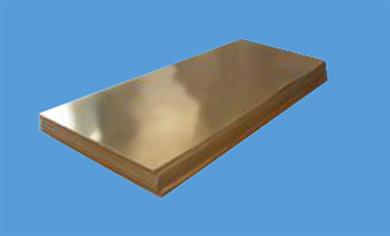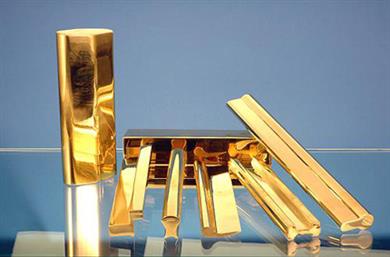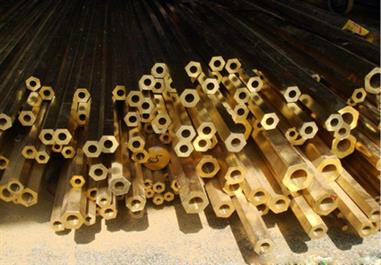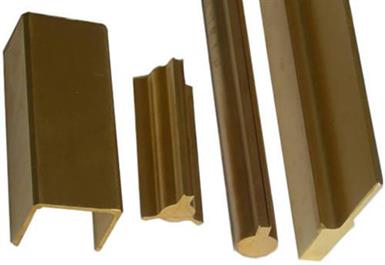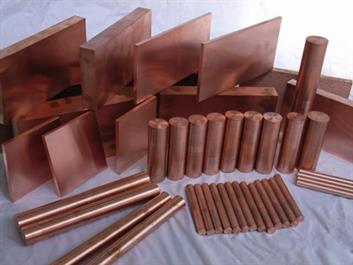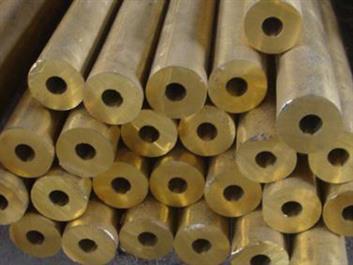Products List
Copper Products
Classification
Features
Types and Distribution
History
Development Tendency
-
Copper products: copper plate, copper bar, copper tube, copper strip, copper wire, copper bus bar, copper materials.
Brass Lock Cylinder Bar,Hexagon Hollow Rod,Profiled Bar,CuCrZr/Electrode,Copper Bush Material
Application
1. Electric Power Transmission: It is mainly used in cable, bus, transformer, switch, interconnecting devices, connector, etc.
2. Electrical Machine Manufacture: It uses copper alloy with high conductivity and high strength. The main part of copper is stator, rotor, spindle nose, etc.
3. It can be found in all machines, like connecting piece, fastener, twisting, bolt, nut, etc.
4. Metallurgy Equipment, Alloy Additive, Pipe System
5. Residence and Public Construction: It is applied in water supply, heat supply, gas supply and fire sprinkler system.
-
Copper Plate
Copper sheet is a roofing and wall material with high stability and low maintenance. Furthermore, it is environment friendly, application safety, easy processing, and high corrosion resistance.
Aluminum bronze, tin bronze, silicon bronze, beryllium bronze, red copper, brass, cupronickel, tungsten, rose copper, oxygen free copper.
Classification of copper plate: Aluminum bronze plate, brass plate, tin bronze plate, silicon bronze plate, beryllium bronze plate, tungsten bronze plate, red copper plate, rose copper plate, oxygen free copper plate, all specification, type copper plate.
Common copper plate Designation: H62, H65, H68, H70, H80, H90, C2600, C2680, C2700, C5210, C5191, C51000, QBe2.0, C1100, T2, etc.
Copper Bar
Copper rod is a kind of non-ferrous metal processing bar, which is capable of good workability and high electricity conductivity. It is mainly divided into brass rod (copper and tin alloy, which is cheap) and red copper bar (high copper component).
Aluminum bronze, tin bronze, silicon bronze, beryllium bronze, red copper, brass, cupronickel, tungsten, rose copper, oxygen free copper.
Classification of copper rod: Aluminum bronze rod, silicon bronze rod, silicon bronze rod, beryllium bronze plate, brass plate, cupronickel plate, red copper plate, rose copper plate, tungsten copper plate, oxygen free copper plate, all textures of copper plate.
Common Designation: H59, HPb59-1, HPb59-3, H62, H65, H68, H70, H80, H90, C2600, C2680, C2700, C5210, C5191, C51000, QBe2.0, C1100, T2, etc.
General Specifications: diameter φ1.0 to 200 mm, length 2500 to 6000 mm.
Copper Tube
Copper tube, also called red copper tube, which is one kind of non-ferrous metal pipes, it is seamless tube of pressed and drawn. Red copper pipe is characterized by hardness, corrosion resistance, therefore, and it has become the first choice for modern contractor who install it in all residential commodity houses of tap water pipes, heating, cooling pipe.
Aluminum bronze, tin bronze, silicon bronze, beryllium bronze, red copper, brass, cupronickel, tungsten, rose copper, oxygen free copper.
Aluminum bronze pipe, tin bronze pipe, silicon bronze pipe, beryllium bronze pipe, brass bronze pipe, cupronickel bronze pipe, red copper pipe, rose copper pipe, tungsten copper pipe, oxygen free copper pipe, all types of copper pipes.
Common Designation: H62, H65, H68, H63, H70, H80, H90, C2600, C2680, C2700, C5210, C5191, C51000, QBe2.0, C1100, T2, etc.
General Specifications: wall thickness 0.1 to 100 mm, OD 1 to 600 mm.
Copper Strip
Copper strip is a metal element, which specification is 0.1~3×50~250mm. All status of copper strip is mainly applied in producing electrical component, lamp holder, battery caps, button, seals, and connector. And it is mainly used as electric conduction, heat conduction, and corrosion resistance equipment. All kinds of parts are as flowing: electrical component, switch, gasket, shim, electronic vacuum devices, radiator, conductive base material and automotive water tank, cooling fin, cylinder sheet, etc.
Aluminum bronze, tin bronze, silicon bronze, beryllium bronze, red copper, brass, cupronickel, tungsten, rose copper, oxygen free copper.
Aluminum bronze strip, tin bronze strip, silicon bronze strip, beryllium bronze strip, brass strip, cupronickel strip, red copper strip, rose copper strip, tungsten copper strip, oxygen free copper strip, all specifications of copper strip.
Common Designation: H62, H65, H68, H63, H70, H80, H90, C2600, C2680, C2700, C5210, C5191, C51000, QBe2.0, C1100, T2, etc.
Specifications: thickness 0.01 to 2.0 mm, width 4 to 600 mm.
Copper Wire
Copper wire has feature of good electric conductivity, heat conductivity, corrosion resistance, processing property, a few oxygen that has little influence for electric conductivity and heat conductivity, but it is easily to cause hydrogen disease, copper wire is not suitable for processed (annealing and welding) and used in high temperature (such like 370 degree centigrade) reducibility area.
Aluminum bronze, tin bronze, silicon bronze, beryllium bronze, red copper, brass, cupronickel, tungsten, rose copper, oxygen free copper.
Aluminum bronze wire, tin bronze wire, silicon bronze wire, beryllium bronze wire, brass wire, cupronickel wire, red copper wire, rose copper wire, tungsten copper wire, oxygen free copper wire, all specifications of copper wires.
Common Designation: H62, H65, H68, H70, H80, H90, C2600, C2680, C2700, C5210, C5191, C51000, QBe2.0, C1100, T2, etc.
Specifications: wire diameter 0.01 to 15.0 mm
Copper Bus Bar
Copper bus bar is a kind of big electric current conductivity product, which applied in appliance project such as high and low pressure appliances, switch contact, electrical equipment, bus duct, also widely used in super electric current and electrolysis smelting project such like metal smelting, electrochemical and electroplating, chemical caustic soda. Our supplier copper bar has feature of low resistivity, big bending.
Aluminum bronze, tin bronze, silicon bronze, beryllium bronze, red copper, brass, cupronickel, tungsten, rose copper, oxygen free copper.
Aluminum bronze bar, tin bronze bar, silicon bronze bar, beryllium bronze bar, brass bar, cupronickel bar, red copper bar, rose copper bar, tungsten copper bar, oxygen free copper bar, all specifications of copper bar.
Common Designation: H59, H62, H65, C2700, C2680, C2600, H68, H70, C5210, C5191, C51000, QBe2.0, etc.
Specifications: thickness 1 to 100 mm, width 10 to 400 mm.
-
Red copper,Rose copper
Description
Rose copper is also called red copper, pure copper. The density of pure copper is 8.96 and its smelting point is 1, 083 degree centigrade, which has merit of good electric conductivity and heat conductivity, good plasticity as well as easy to be processed in hot and cold state.
Application
1. Rose copper is largely applied in making products that demands for good electric conductivity, like wire, cable, brush, spark electric acidic for copper.
2. Red copper is widely applied in making electric and heat conductivity equipment.
Characteristics
1. The electric conductivity and heat conductivity of red copper are inferior to silver.
2. Good welding: It can be made to all kinds of half finished products and products by cold and hot processing.
3. Good corrosion: It can be used in chemical industry.
Classification
1. Red copper (T1, T2, T3, T4)
2. Oxygen free copper (TU1, TU2, high pure, vacuum oxygen free copper)
3. Deoxidized copper (TUP, TUMn)
4. Special copper with a few alloy element (arsenic copper, tellurium copper, silver copper)Brass
Description
It is copper alloy which main adding element is zinc. Because its appearance is cover yellow color, it is collectively called brass. Copper and zinc binary alloy are called general brass or simple brass. Ternary brass is called special brass or complicated brass.
Characteristics
1. Brass alloy with zinc less than 36 percent is made of solid solution, which has merit of good cold processing property. Brass with 30 percent of zinc is normally used to make cartridge case.
2. Brass alloy between 36 percent to 42 percent zinc is made up of solid solution, one of the most common used is zinc with 40 percent of the Tiananmen brass.
Classifications
1. General Brass: It is copper and zinc alloy. When zinc is less than 39 percent, zinc can dissolve in copper and generate single phase a, which called single phase brass. Brass is typical of good plasticity, which is suitable for cold and hot pressure processing. When zinc content is more than 39 percent, a simple phase and b solid solution with basic of copper and zinc, which are called duplex brass.
2. Special Brass: Brass is multiple alloys that is added other alloy element into general brass. Common added element including lead, tin, aluminum, etc. Correspondingly, they can be called lead brass, tin brass, aluminum brass. The aim of alloy element is to improve strength of extension and perfect the manufacturability.thtyjtyjtBronze
Description
Bronze originally referred to the copper-tin alloy, other than the brass, copper-nickel alloy copper alloy known as bronze, and often in front of the bronze name preceded by the name of the first major add elements.
Characteristics
1. Be characterized by casting properties, friction properties and good mechanical properties, it is suitable for the manufacture of bearings, worm gear, gear, etc.
2.Lead bronze is a modern engine and grinding machine widely used bearing material.
3.Aluminum bronze is characterized by high strength, wear resistance and good corrosion resistance. It is used to cast the high load of gear, bushings, marine propellers.
4.High elastic limit and good conductivity of beryllium copper and phosphor bronze, so it is suitable for the manufacture of precision springs and electrical contact element. Beryllium copper used to make the use of coal, oil depots and other non-sparking tools.
Classification
1. Tin Bronze: It is copper and tin alloy whose main adding element is tin, also called tin bronze. Tin bronze is typical of good antifriction erosion, diamagnetism, low-temperature toughness. Tin bronze can be divided into two types according to the production methods, which are tin bronze and casting bronze.
A. Pressure processing Tin Bronze: Generally, tin element is less than 8 percent. Tin bronze is suitable for processing into plate, strip, bar, pipe for supply in the cold and hot pressure. After processing and harden, the strength of extension and hardness up, but the plasticity down. After annealing, tin bronze can keep high strength of extension and improve the plasticity, especially obtain high elastic limit. Often used including Qsn4-3 Qsn6.5~0.1.
B. Casting Bronze: It is suitable for parts that with complicated shape, low demand on the density, such like sliding bearing, gear, etc. Often used including ZQsn10-1 ZQsn6-6-3.
2. Special Bronze: Adding into other element instead of tin, or tin free bronze, mostly special bronze has high mechanical, wear resistance, corrosion resistance than tin bronze.
Typical designation: Chemical Component(%)(quality fraction) Sn (tin), Al (aluminum), Fe (iron), Pb (lead), Si (silicon), P (phosphorus), Cu, total impurities.Copper-nickel alloy
Description
Copper-nickel binary alloy is known as ordinary copper-nickel alloy. It is made of cupronickel alloy of manganese, iron, zinc, aluminum and other elements that complex copper-nickel alloy.
Application
Manganese, constantan, test copper manganese content of manganese copper-nickel alloy It is applied in the manufacture of precision electrical instruments, rheostats, precision resistors, strain gauges, thermocouples and materials used.
Classification
1. Copper-nickel alloy: This alloy is characterized by the mechanical properties and corrosion resistance, beautiful color. This copper-nickel alloy is widely used in the manufacture of precision machinery, chemical machinery and ship components.
2. Electrical copper-nickel alloy: Be made of two categories. Electric cupro-nickel generally has good thermoelectric properties. -
The Type and Distribution of Copper Mine
(1) Porphyry Type, (2) Sand Shale Type, (3) Copper Nickel Sulfide Type, (4) Pyrite Mine Type, (5) Copper Uranium Metal Type, (6) Natural Copper Type, (7) Pulse Type, (8) Carbonate Type, and (9) Skarn Type
Porphyry Type
Porphyry type copper mine is a kind of copper mine, which can be used in large scale of mechanical open mining. The reserves of ore is up to several hundred million ton. Copper grade is less than 1 percent. According to the statistics of 103 porphyry type deposit in the world, single deposit ore reserves is up to 5.5 hundred million, copper grade is 0.6 percent. Porphyry type is one of the most important copper mine industrial types.Distribution
(1) Circum pacific belt, including long and narrow porphyry copper mine at the edge of North American. For example, Canada, America, Mexico, Panama, Peru, Chile, etc.
(2) Tethys porphyry copper belt, including Hungary, Iran, Pakistan
(3) Central Asia-Mongolia, important deposit distributed in Uzbekistan, Kazakhstan, central north parts of Mongolia, etc.Sandy Shale Type
Sandy Shale Type Copper Mine is referred to strata-bound which in the sedimentary rock in different age. Deposit is produced in a set of sedimentary rock or sedimentary metamorphic rock, which is one of the main industrial types of copper mine in the world, accounting for 30 percent of the copper reserves in the world.
Deposit has feature of large scale, high grade, abundant associated component, so its economic value is large.Distribution
This kind of deposit is distributed widely in the world, except above mentioned copper strip, also including original soviet union, America, west of America, south west of Canada, and Bolivia. Recent years, the large copper mine which was discovered in Afghanistan and Brazil belong to sandy shale type copper mine.
Pyrite Type Copper Mine
Pyrite type copper mine is referred to deposit that connecting with submarine volcanism with large number of pyrite and certain quantity copper, lead, zinc. The West mostly call it blocky sulfide deposit, at present, it was discovered 420 with same kind deposit. Canada, America, Original Soviet Union, Spain, Portugal, Cyprus, South Africa, Japan are all the important product place of this kind of deposit.Blocky Sulfide Mine
This modern deposit was discovered firstly ridge of East Atlantic near to the 21 degree of north latitude in 1978. Although copper and tinc has a high grade (copper 6 percent, zinc 29 percent), a multiple metal blocky sulfide deposit was discovered on the ridge, it is 970 length, 200 width, 35 height with 25 million ton of ore quantity. It meets the needs of industrial deposit and the max of copper in ore is 11 percent, tinc is 0.8 percent, including little silver (PPM), Molybdenum (0.03 percent), tin (0.03 percent).
Distribution
America investigated continually at the sea area of 13 degree of north latitude and discovered more deposits. They discovered in the sea area near to the Vancouver Island, the deposit only accounts for 1 percent, but this kind of type is very important in Original Soviet Union, accounting for 30.6 percent of total reserves of copper. This kind of important deposit is distributed in: Canada, America, Original Soviet Union, Australia, Finland, of course, our country.Other Types
Except for above mentioned types, there are Pulse Type, Natural Copper Type, Carbonate Type, Skarn Type, etc. They totally accounts for 3.6 percent of total copper reserves in the world. For different countries, these types maybe important. -
History
1. Copper which used by human has a history of thousands of years. Tomb archaeologists discoveredthat the Egyptians used cooper products 6, 000 years before in the historic times.
2. Copper is earliest metal which used by human ancestors. Due to its excellent characteristics and fantastic function, copper not only makes indelible contribution for the promotion of human society but also be invented new usage continually with the development of human civilization.
3. Copper is both an ancient metal and a modern project material full of life and vigor. Nowadays, human has entered into a society that is colorful, characterized by electrification and electronic information, high civilization, which opening up wider place for the application of copper.
4. Copper is used by human in the shape of various types of metal, alloy, compound, which has involved into all aspect of production and life, it has become the indispensable and important metal which helps human enter 21 century and get rapid development. -
Development Tendency
1. Global copper consumption is still keeping certain increasing speed, but the growing rate recedes. Since 1990s, with the increase of international copper consumption, two types of countries play an important part. One type is North America and developed countries in Europe, like America, Canada, France, Germany, Italy, Britain, Japan, etc.
The other one is Asian and developing countries, less developed countries and areas in South America, such like China, India, Korea, Taiwan province of China, Malaysia, Thailand, Philippines, Indonesia, Brazil, Chile, etc.
2. Great development strength on global copper mine, but the supply is still tense in short term:
At the background of rapid increasing of the global copper price and the continual tense of the mineral resources supply, the price of copper concentrate is rising all the way. At the same time of great rise of the ore enterprise profit, it stimulates mine enterprise to enlarge resource development strength, promotes quick improvement of the capacity.
3. The fluctuation range of the global copper price is great recently: in the past few years, copper shows two properties, one property for commodity, one property for metal. Copper as commodity, always in the state of tense supply in the past few years, the price of copper keeps increasing.
4. The pace of global large scale of copper enterprise recombination speeds up. Monopoly of mine resources increasing intensifying: the wave of economic globalization has fluctuates to every field, copper industry is no exception.


